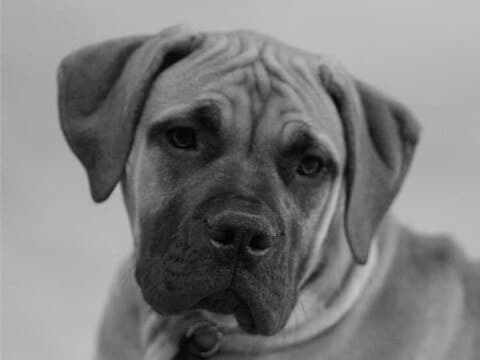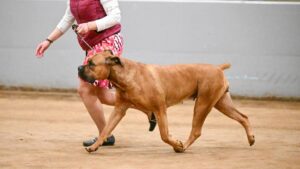
Showing Your Boerboel – The Link Between Showing and Performance
Discover the Boerboel’s versatility! Explore the vital link between conformation showing and performance success in this unique breed.

Home » Meet The Breeds » Boerboel
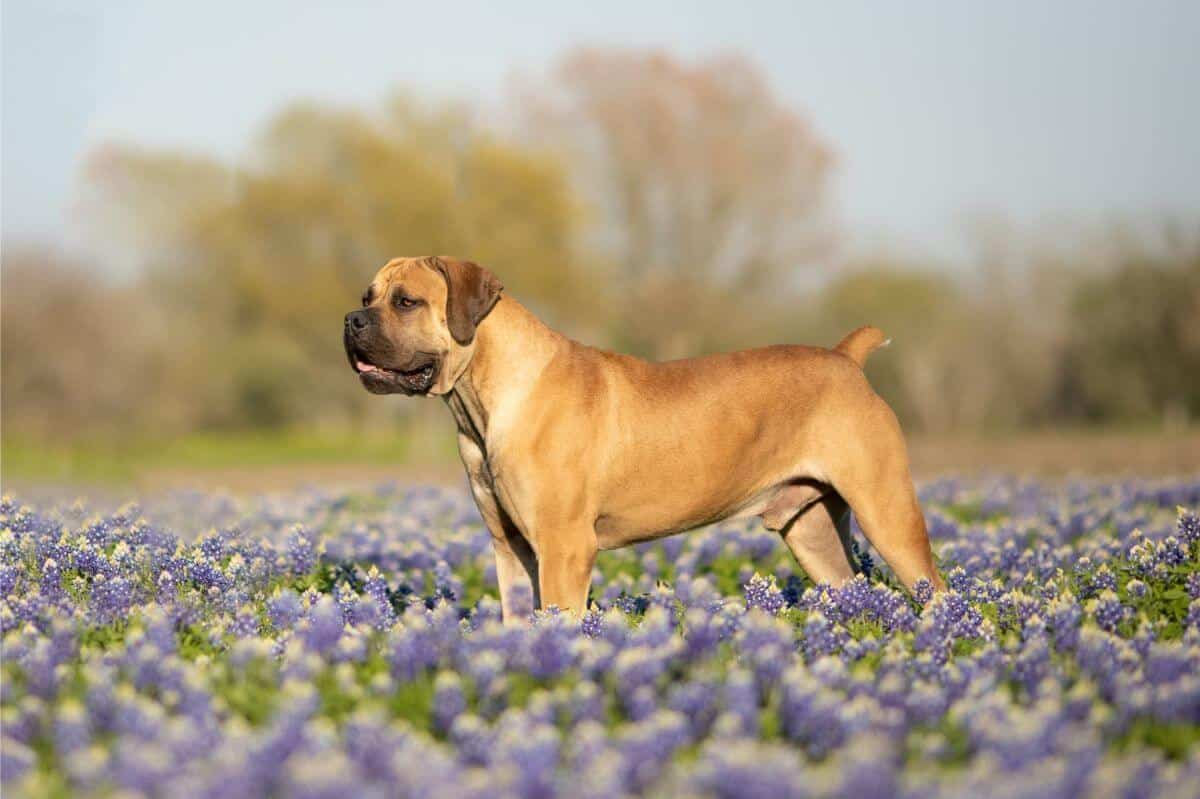
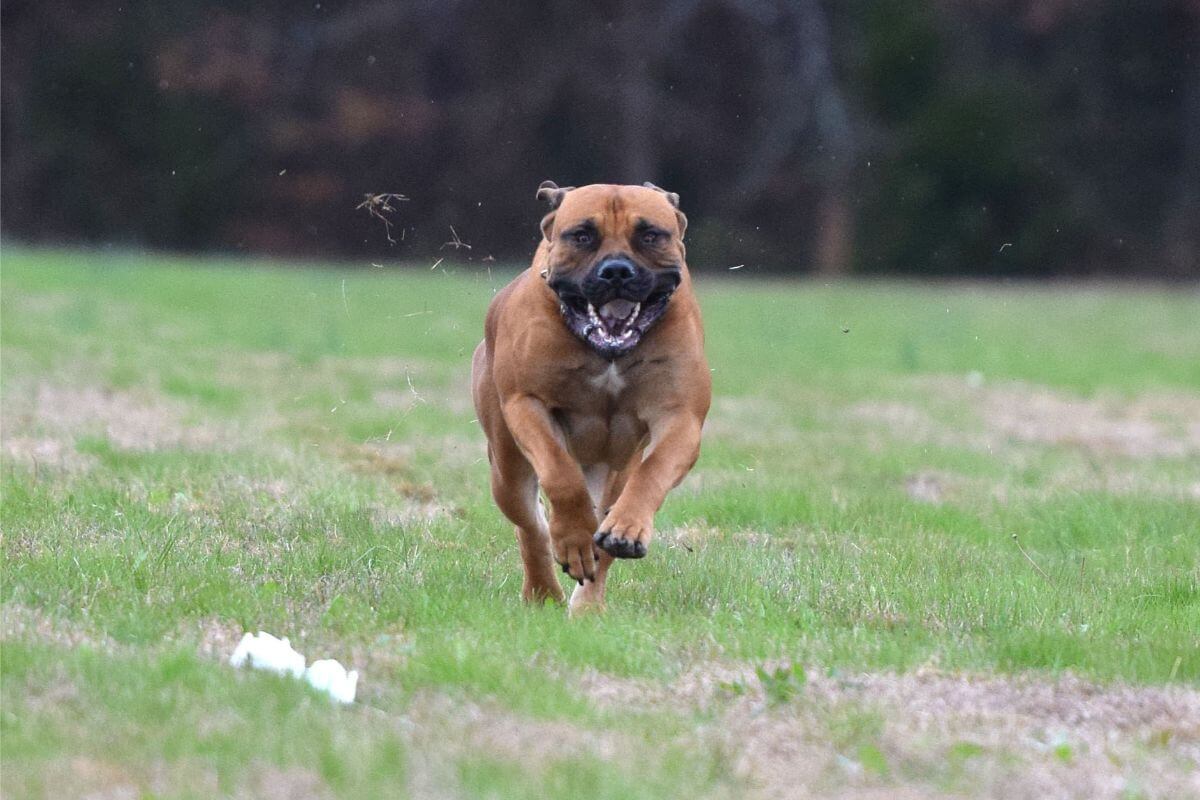
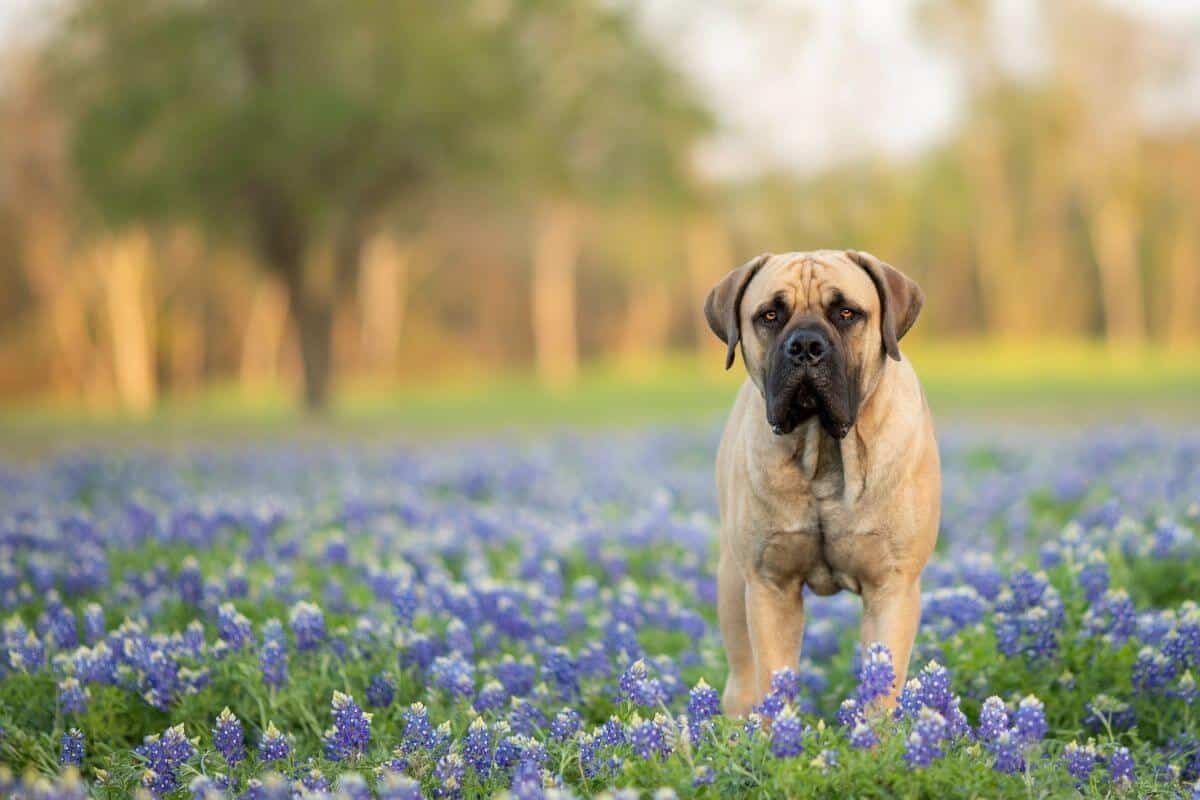
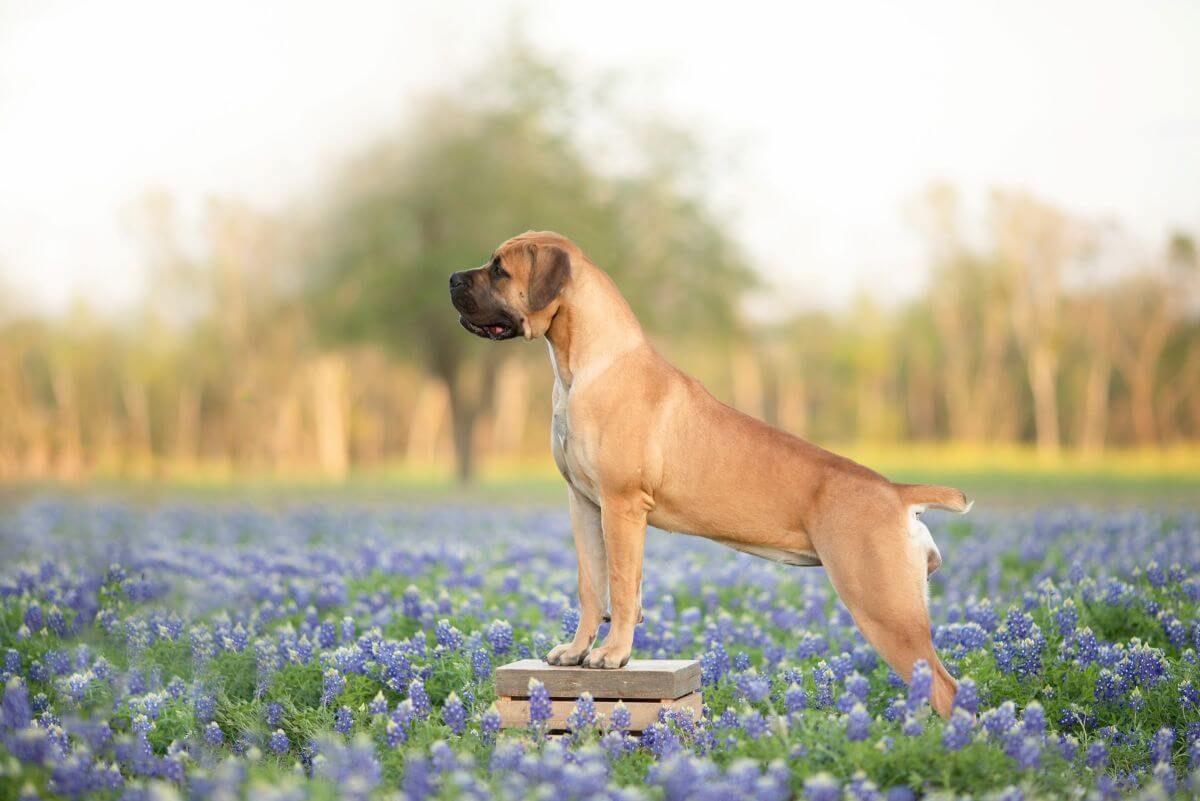
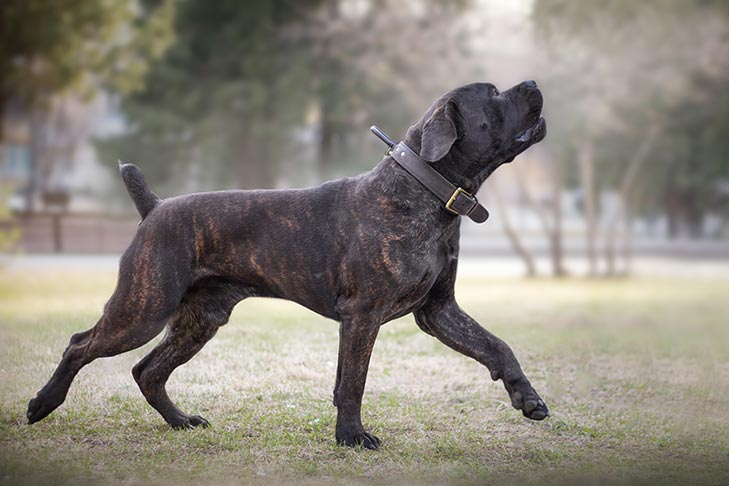
The Boerboel is a powerful and confident working dog that originated in South Africa, where it was developed to guard farms and protect livestock. Known for its imposing presence, the Boerboel combines strength with agility, making it an excellent companion and protector. Despite its muscular build and serious demeanor, the Boerboel is affectionate and devoted to its family, thriving in environments where it can form close bonds with its human companions. With proper training and socialization, the Boerboel is both a dependable guardian and a gentle family member.
Working
22 – 27 inches
150 – 200 pounds
9 – 11 years
| Country of Origin | South Africa |
|---|---|
| Bred For | Guarding, Tracking |
| Known For | Intimidating Appearance, Calmness, Strength |
| Popularity | Low |
| Temperament | Intelligent, Dominant, Protective |
| Activities | General Farm Dog, Guarding, Conformation Shows, Dog Sports |
The Boerboel originated in South Africa, where it was developed as a farm dog capable of guarding property, protecting livestock, and assisting with hunting. The breed’s name, derived from the Afrikaans words “boer” (farmer) and “boel” (dog), reflects its heritage as a reliable companion to farmers who needed a powerful and versatile working dog.
Boerboel’s ancestry can be traced back to the 1600s, when European settlers, including Dutch, German, and Huguenot immigrants, brought large, mastiff-type dogs to South Africa. These dogs were bred with native African dogs and other imported breeds to create a strong and adaptable guardian capable of withstanding the harsh conditions of the African landscape.
Renowned for their courage and loyalty, Boerboels were used to defend homesteads from predators such as lions and leopards. Over time, they became an integral part of farm life, valued for their ability to work independently while remaining deeply bonded to their families.
The breed faced a decline in the mid-20th century, but dedicated efforts by breeders in South Africa revived and standardized the breed. The Boerboel’s reputation as a protector eventually gained international recognition, leading to its introduction in other countries.
The Boerboel was officially recognized by the American Kennel Club (AKC) in 2015 as a member of the Working Group.
Male Boerboels typically stand between 24 and 27 inches tall at the shoulder, while females measure slightly less, ranging from 22 to 25 inches.
Males generally weigh between 150 and 200 pounds, with females being somewhat lighter, averaging 120 to 160 pounds.
The Boerboel has a balanced and well-proportioned body, reflecting strength, agility, and soundness. Its broad chest, solid bone structure, and muscular build emphasize its working heritage as a protector. The breed’s frame is substantial without appearing overly bulky, ensuring both power and efficiency.
Texture: The Boerboel has skin that is thick and loose but fits smoothly. The breed has a short, dense, and smooth coat that lies close to the body. Its texture provides protection while being easy to maintain.
| Standard Color | |
|---|---|
| Brown | y |
| Brindle | y |
| Cream | y |
| Reddish Brown | y |
| Red | y |
| Fawn | y |
| Standard Marking | |
|---|---|
| White Markings | y |
| Piebald | y |
| Irish Marked | y |
| Black Mask | y |
A Note About Color: The recognized colors and patterns may appear with or without a mask; however, a black mask is desirable. Limited clear white patches on the legs and forechest are permissible. The total area of white on a piebald dog may not exceed one-third. More than this disqualifies, as does ticking or spots within the white, a blue coat, a long coat, or any base color other than those listed. The nose leather must be black, and the lips, palate, eye rims, paw pads, toenails, anus, and the skin and hair around the genitals must be well-pigmented.
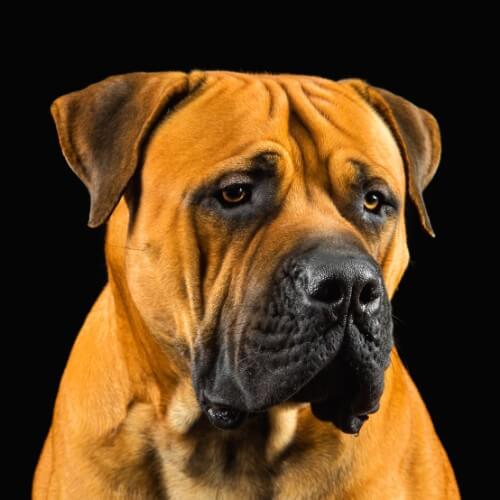
The tail is traditionally docked at a medium length, although natural, undocked tails are also acceptable. Natural tails are carried with a slight curve, but should not curl over the back. Both docked and undocked tails complement the breed’s powerful appearance.
The Boerboel is a powerful and loyal breed that thrives in homes where it can receive consistent training, socialization, and physical activity. While it is known for its protective instincts, it also forms strong bonds with its family members, making it a devoted companion. However, potential caretakers should be prepared for the breed’s size, strength, and assertive nature, which require experienced handling and careful management.
The Boerboel is generally a robust and healthy breed, with a lifespan ranging from 9 to 11 years. However, like all large-breed dogs, individuals may be prone to certain health issues that should be monitored throughout a dog’s lifetime. Maintaining a healthy weight, providing regular exercise, and following a balanced diet can help to reduce the risk of some common health problems.
Boerboels may be predisposed to several health conditions, including:
Boerboel is confident, intelligent, and deeply loyal. Its protective instincts make it an excellent guard dog, but it is also affectionate with family members. While wary of strangers, proper socialization helps the Boerboel to remain well-mannered in new situations.
Boerboels are sensitive to their environment and dislike being left alone for long periods. They tend to get along with children and other pets when raised together, but require supervision due to their size and strength. With early training and firm leadership, Boerboels can be dependable companions that balance loyalty with a calm demeanor.
Growing Boerboels benefit from a high-quality, large-breed puppy diet to support growth and prevent joint issues. Adults typically require 4 to 8 cups of high-protein food per day, divided into two meals.
To prevent obesity, portion sizes should be adjusted based on activity levels, and fresh water should always be available. Consulting a veterinarian helps to tailor feeding plans to meet individual needs and avoid health concerns such as bloat.
Boerboels are intelligent and trainable, but they require firm, consistent leadership due to the breed’s strong-willed nature. Early socialization and obedience training are critical to prevent over-protectiveness and ensure reliable behavior.
Positive reinforcement methods, such as treats and praise, work well, but clear boundaries are essential. Leash training and recall commands are especially important to manage their guarding instincts and prey drive.
With mental stimulation and structured activities, a Boerboel can thrive as an obedient and versatile working dog.
Boerboels need 60–120 minutes of daily exercise to stay fit and well-behaved. Walks, playtime, and training sessions keep these dogs physically and mentally stimulated.
| Energy Level | Moderate |
|---|---|
| Exercise Requirements | 2 Hours/Day (Minimum), Daily Walks, Vigorous Running, Regular Exercise, Mental Stimulation |
While they enjoy activities like hiking or running, Boerboels adapt to moderate routines as long as they remain active. Secure yards provide safe play areas, but supervision is important due to the breed’s protective instincts.
The Boerboel’s short, dense coat is easy to maintain with weekly brushing that removes loose hair. Shedding increases during seasonal changes, so brushing may need to be more frequent at those times.
| Coat Type | Short, Dense, Smooth, Shiny |
|---|---|
| Grooming Requirements | Weekly Brushing, Occasional Bathing, Routine Ear Cleaning, Periodic Nail Trimming, Regular Tooth Brushing |
Bathing is only necessary when the Boerboel is truly dirty, and routine care, such as nail trimming, ear cleaning, and teeth brushing, will support the dog’s overall health. The breed’s low-maintenance grooming needs can make this an ideal dog for owners seeking a clean and courageous companion.
Boerboels thrive in homes with secure yards and space to move, making them less suited for apartment living. They tolerate warm weather better than cold, but shelter and water are essential in both conditions.
These dogs form strong bonds with their families and dislike being left alone for long periods. Proper socialization and supervision help to manage the breed’s protective instincts, ensuring the Boerboel interacts well with guests and other animals. These dogs are best suited for experienced owners who can provide structure and leadership.
Bringing a Boerboel puppy into the home is an exciting and rewarding experience. These intelligent and affectionate dogs form strong bonds with their families, but they require structured care and training from the start. Due to the breed’s rapid growth and protective instincts, Boerboel puppies need proper nutrition, socialization, and consistent guidance to develop into well-mannered, confident adults.
Caring for a Boerboel puppy begins with a balanced diet designed for large breeds to support steady growth and joint health. Meals should be divided into 2–3 portions per day to prevent overfeeding and reduce the risk of bloat.
Exercise should be gentle and controlled, such as short walks or supervised play, to protect developing joints. High-impact activities like jumping or climbing stairs should be avoided during growth phases to prevent strain or injury.
Early socialization is critical to help the Boerboel puppy grow into a confident and adaptable adult. Exposure to different environments, people, and animals prepares the pup for various situations and reduces fearfulness or reactivity. Puppy training classes provide structured learning while reinforcing obedience and proper behavior.
Training should focus on positive reinforcement using treats and praise. The Boerboel puppy responds well to clear boundaries and routines, which help to prevent stubbornness or dominance behaviors. Establishing a schedule for feeding, potty breaks, and rest enables the pup to feel secure and adapt quickly to its new homes.
With consistent care, proper nutrition, and early training, the Boerboel puppy will grow into a loyal and watchful guardian and a well-balanced companion.
The Boerboel is recognized by the world’s leading registries and kennel organizations, which categorize the breed into a specific Group based on its unique characteristics. This breed is recognized worldwide under the following Group designations:
| Organization | Group Designation |
|---|---|
| AKC (American Kennel Club) | Working |
| UKC (United Kennel Club) | Guardian |
| CKC (Canadian Kennel Club) | Not Recognized |
| ANKC (Australian National Kennel Council) | Not Recognized |
| RKC (The Royal Kennel Club) | Not Recognized |
| FCI (Fédération Cynologique Internationale) | Not Recognized |
The ideal Boerboel is described by a Breed Standard that is approved by each of the world’s leading registries and kennel organizations. The Breed Standards for this breed may be found in the following links:
| Organization | Breed Standard |
|---|---|
| American Kennel Club | AKC Boerboel Breed Standard |
| United Kennel Club | UKC Boerboel Breed Standard |
| Canadian Kennel Club | Not Recognized |
| Australian National Kennel Council | Not Recognized |
| The Royal Kennel Club | Not Recognized |
| Fédération Cynologique Internationale | Not Recognized |
Boerboel rescue groups are dedicated to helping Boerboels in need by providing shelter, medical care, and rehoming services. These organizations focus on rescuing abandoned, neglected, or surrendered Boerboels and work to match them with suitable adoptive families.
Yes, Boerboels do shed, but their short coat makes it relatively manageable. Regular brushing helps to control shedding and keeps their coat healthy.
No, Boerboels are not hypoallergenic. They shed and produce dander, which can trigger allergies in sensitive individuals.
Boerboels typically live 9 to 11 years. Their lifespan can vary depending on genetics, care, and overall health.
Yes, Boerboels are known for being loyal and protective family dogs. They thrive with proper training and socialization to ensure they become confident and well-mannered as adults.
Boerboels are not excessive barkers, but will alert to potential threats. Their guarding instincts make them vocal when they sense something unusual.

Discover the Boerboel’s versatility! Explore the vital link between conformation showing and performance success in this unique breed.
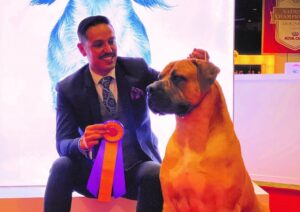
Fernando Moreno is the breeder behind Qubitron Boerboels. Read about the kennel’s beginnings, champion dogs, Boerboel puppies, photos & more!
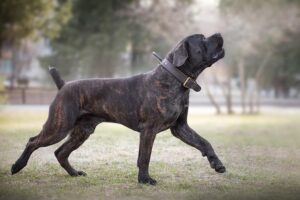
What should you look for when judging Boerboels? See what these top breeders and breed mentors shared about their beloved working dogs.
The best way to ensure a long and happy relationship with a purebred dog is to purchase one from a responsible breeder. Not sure where to begin?
Contact the National Parent Club’s Breeder Referral Program, which is listed on the AKC Breeder Referral Contacts page.
